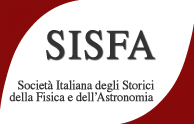Speaker
Description
The so-called “Tartini tone” (or “Tartini third sound”) is a particular acoustic phenomenon occurring when two notes are simultaneously played on a violin, making a bichord. In this case, an unexpected “third sound” (usually much deeper than the first two) is audible. The discovery of this phenomenon, due to Giuseppe Tartini (1692-1770), one of the greatest violinists of all times, produced a large scientific debate during the second half of the XVIII century and the first half of the XIX century. In this period, other “unusual” sounds (generically called combination tones) were discovered, also by means of other musical instruments. Many scientists took part in the development of a physical explanation for such phenomenon. Among them, Euler, Giordano Riccati, Joseph-Louis Lagrange, Thomas Young, George Simon Ohm and especially Hermann von Helmholtz. Interestingly, many musicians, as for instance Rameau and of course Tartini, got involved. Nowadays, it is established that the phenomenon is due to the intrinsic non-linearities existing in both the musical instrument and in the human ear, which lead to combinations between different Fourier components of the sound. As well as a scientific interest, the Tartini tones have a relevant interest in music theory and practice. In this work the scientific debate about the combination tones is critically reviewed, showing its historical development. Deep interconnections between the evolution of the musical thinking and of the scientific thinking are found.

